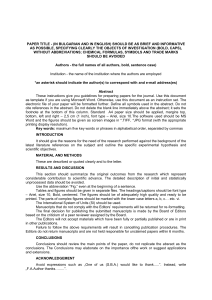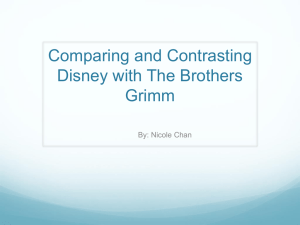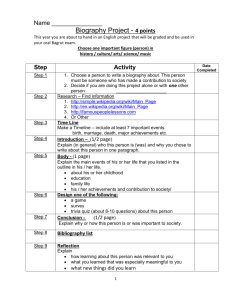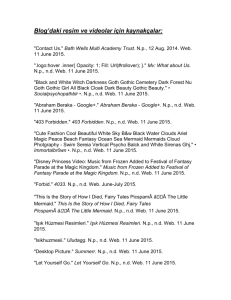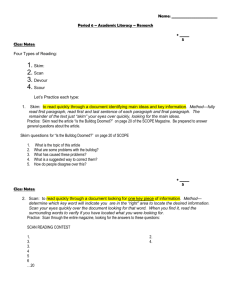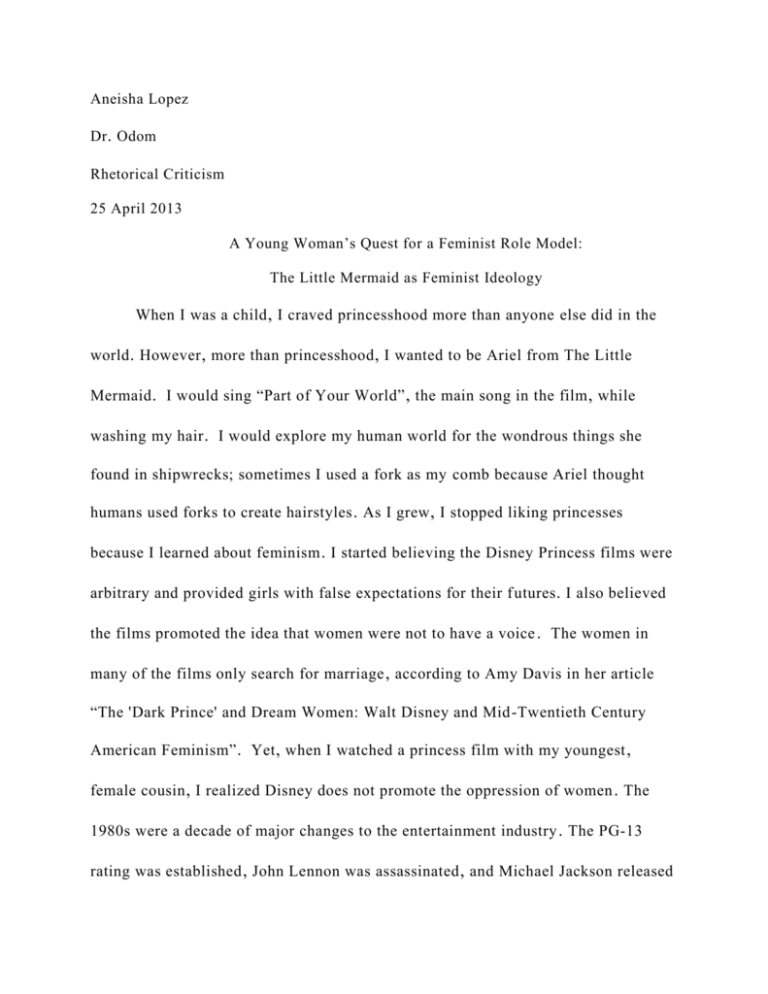
Aneisha Lopez
Dr . Odom
Rhetorical Criticism
25 April 2013
A Young Woman’s Quest for a Feminist Role Model:
The Little Mermaid as Feminist Ideology
When I was a child , I craved princesshood more than anyone else did in the
world . However , more than princesshood , I wanted to be Ariel from The Little
Mermaid . I would sing “Part of Your World” , the main song in the film , while
washing my hair . I would explore my human world for the wondrous things she
found in shipwrecks; sometimes I used a fork as my comb because Ariel thought
humans used forks to create hairstyles . As I grew , I stopped liking princesses
because I learned about feminism . I started believing the Disney Princess films were
arbitrary and provided girls with false expectations for their f utures . I also believed
the films promoted the idea that women were not to have a voice . The women in
many of the films only search for marriage , according to Amy Davis in her article
“The 'Dark Prince' and Dream Women: Walt Disney and Mid -Twentieth Century
American Feminism” . Yet , when I watched a princess film with my youngest ,
female cousin , I realized Disney does not promote the oppression of women . The
1980s were a decade of major changes to the entertainment industry . The PG-13
rating was established , John Lennon was assassinated , and Michael Jackson released
Lopez 2
Thriller . Politically , second wave feminism was beginning . Debates on sexuality ,
family , and reproductive rights broadened (Bilken) . Similarly , Disney movies
evolved to depict these ideas on a cartoon level . The Little Mermaid depicts a young
mermaid who , through magic , becomes a human by choice . The villain in the movie
acts highly sexual , but promotes anti-feministic ideals . Prince Eric represents the
men supporting feminism . The Little Mermaid is a feminist film by Disney that
symbolizes many of the gender politics surrounding second -wave feminism . The
essay separates the movie into three overlapping parts . Section one of the essay
details Ariel’s personality and the feministic symbolism she depicts . Section two
defines the ideal relationship between a man and a woman , as seen in Prince Eric
and Ariel’s days together . Section three explains Ursula’s villainous , anti-feminist
stance , and why she is not an over sexualized older woman
Section 1: Ariel’s Introduction
Ariel is a headstrong , curious , young mermaid . Viewers meet Ariel as she
explores a sunken ship and soon learn that this is a normal pastime of hers . Despite
being a mythical , sixteen-year-old creature , Ariel is relatable to many women . She
struggles to be understood by her father and sisters , and seeks knowledge . She is
more independent than other princesses are, and she yearns to take control of her
own life in order to get what she wants . This , to an extent , is a great lesson to teach
young girls and is inspiring to women everywhere . Her father , King Triton ,
Lopez 3
emphasizes his power of Ariel repeatedly . He scolds her for going to the surface and
speaking with a seagull named Scuttle . Despite her father’s disapproval , she
continues to explore human items and visit Scuttle . While one could criticize that
she is a bad child that disobeys her father , I consider her strong willed , and it makes
me proud as a female to see Ariel stay the way she is , never changing .
Ariel wants to explore the human world before she meets Eric (Part of Your
World) . She feels as though living in the new world will be different from the life
she leads . Ariel imagines this other world as , in a sense , more her own world than
her actual world under the sea; “she believes it to be a utopia of free movement: she
dreams of legs first for “jumping” and “dancing” and “strolling , ” and only
secondarily for marrying (Ross , 58) . ” After King Triton reprimands her for visiting
the human world and missing a concert in her honor , Ariel swims to her grotto with
her friend Flounder . Inside her grotto , she has an abundance of human knickknacks
from her explorations . Each item has a playful name , which one assumes came from
Scuttle . Ariel sings about her questions to humans , her desires for legs , and the
various items in her treasure trove . Most importantly , Ariel reveals her main
reasoning for wanting to live above water .
Betcha on land , they understand ,
Bet they don’t reprimand their daughters .
Bright young women ,
Lopez 4
Sick of swimming ,
And ready to stand .
Regardless of Ariel’s desire to leave the world under the sea for the human world ,
she ultimately receives her father’s blessing to marry whomever she chooses . This
contradicts Lena Lee’s study , “Understanding Gender through Disney’s Marriages:
A Study of Young Korean Immigrant Girls” , which states: “in order to get married ,
a princess tended to be forced to abandon her own decisions and desires , or her
need for socio-familial rules in marriage (14) . ”
Because Ariel makes the choice about her body , this symbolizes the fight for
women’s reproductive rights . Ariel never abandons her desire for legs; she even
dances with her prince in one scene . She consistently makes her own decisions ,
whether the decisions are right or not . Finally , she is not forced to choose between
her family and her future husband .
Section 2: Relationship between Ariel and Eric
During a storm , lightning cracks against a wooden beam on the ship and
forces all the passengers to escape . Prince Eric tries to save his dog Max , but
gunpowder explodes and Eric flies off the ship . Ariel saves him from drowning
because she is the only one who saw what happened . Disney further separates itself
from anti-feminism by this role reversal . In a majority of films , a woman needs
Lopez 5
rescuing by a man , but Ariel saves Eric first . This contradicts Laura Sells’ statement
in From Mouse to Mermaid , that “despite their (Sleeping Beauty , Cinderella , and
Ariel) beauty and charm , these figures are pale and pathetic compared to the more
active and demonic characters in the film… The young women are helple ss
ornaments in need of protection , and when it comes to the action of the film , they
are omitted” (37) . Ariel is in the middle of the battle with Eric , facing the powerful
Ursula when the sea witch uses King Triton’s trident to create a larger version of
herself .
1
Figure 1
Ariel and Eric represent the feminist’s perception of a relationship on an
equal footing . Eric respects her as an individual and realizes that she has her own
1
It is possible that Ariel saves Eric again by putting him on the beach . The beginning scene almost repeats itself by
showing Prince Eric lying on the sand with torn clothes.
Lopez 6
abilities that he values and respects . In figure one , Eric willingly hands Ariel the
reins to the horse , allowing her to take the lead both literally and figuratively with
their relationship . Eric even relaxes in the seat , trusting her to maintain control of
the horse and buggy 2 as they ride through the town; he is not afraid of letting the
townspeople see a woman in charge .
Section 3: Ursula as the Villain
Ursula is drawn as a “queer predatory monster with a grotesque overwhelming
body that occupies the whole screen” (Zarranz , 57) . While some view this as
Her banishment from King Triton’s palace is 3 similar to Satan’s banishment from
heaven 4. Ursula’s place of power is cavernous .
2
He relaxes after Ariel makes the horse run and jump over the edge of one cliff and onto another . In this way,
Ariel’s depiction is as a young and carefree woman who is willing to test her limits , instead of being meek and
letting men control her.
3
The reason why Ursula was banished is never detailed, even in the sequel and prequel to the film.
4
As depicted in Milton’s Paradise Lost.
Lopez 7
Figure 2
To enter Ursula’s palace , Ariel travels through the mouth opening of a skeletal
animal . She travels through the animal’s neck before entering the womb -like inner
chamber , shown in figure two . As seen in figure two , the rear of this inner chamber
is a conch shell , its lips spread open to reveal a gaping hole leading to some
unknown place . As the article Disney’s sub/version of Andersen’s The Little
Mermaid states , “this gynophobic image is a grotesque parody of the female
anatomy . ” This depiction of Ursula , although highly sexual , does not mean that
sexual women are wicked . Instead , the movie attempts to state that using sex for
power is wrong by having Ursula die in a horrific way .
After luring Ariel into her chambers , Ursula begins convincing Ariel to
become a human . “Poor Unfortunate Souls” begins , and Ursula’s lyrics are
extremely against the ideals of feminism . In the middle of the song , Ursula requests
Lopez 8
Ariel’s voice as payment for the spell that makes the mermaid a human . When Ariel
questions how she is to communicate and interact with the prince , Ursula evilly
replies:
You’ll have your looks ,
Your pretty face ,
And don’t underestimate the importance of Body Language – HA! 5
The men up there don’t like a lot of blabber .
They think a girl who gossips is a bore .
Yes on land , it’s much preferred for
Ladies not to say a word
And after all , Dear , what is idle prattle for?
Come on , they’re not all that impressed with conversation ,
True gentlemen avoid it when they can . 6
But they dote , and swoon , and fawn ,
On a lady who’s withdrawn And it’s she who holds her tongue , who gets her man . 7
5
It is important to note that Ursula makes gyrating motions with her hips for this scene . She is also running her
hands over her body in a sexual manner.
6
When Ariel enters the dining room for dinner, Eric and Grimsby (one assumes is his butler) are having a
conversation about marriage and the woman who rescued him.
7
Although Eric is falling for the silent Ariel, he is still searching for the woman who saved him because he only
remembers her voice.
Lopez 9
The lyrics , and imagery of where Ursula dwells , allow the viewer to conclude that
Ursula believes women are only good for sex . The movie contradicts Ursula by
allowing the prince to fall in love with Ariel’s personality , and Ariel falls in love
with Eric’s as well . By removing her vocal chords , Ursula unintentionally made it
possible for the two to move past looks . When she realizes her mistake , Ursula
transforms herself into a siren and attempts to ensnare the prince with Ariel’s voice .
Under her spell , the prince falls in love with Ursula quickly and leaves Ariel behind .
With this , Disney proves that a woman’s voice is something to both listen to and
cherish .
Figure 3
Figure three shows the scene in which Ursula finally receives a phallic
penetration by the sunken ship . After creating a storm and forcing the waves to obey
her , Ursula mistakenly dislodges an old , sunken ship . Eric , in his final attempt to
rescue Ariel , commandeers the ship and plunges the bow into Ursula’s gut .
Lopez 10
Lightning strikes , electricity surges through the sea witch , and her tentacles wrap
around the ship as she sinks below the water .
Conclusion
The Little Mermaid contains many levels of feminism . The movie also
encourages questions , adventures , and independence . Ariel stands up for herself ,
longs for a world where a man does not control her , and is full of wonder about
everything .
Although girls might be delighted by Ariel’s teenage
rebelliousness , they are strongly positioned to believe , in
the end , that desire , choice , and empowerment are closely
linked to catching and loving a handsome man (Girox) .
Yet , the movie does not finish with Ariel simply marrying a man and moving from
one area of male dominance to another . The main oppressor , Ursula , dies violently –
along with her beliefs that women should sit down , shut up , and look pretty . In the
end , King Triton accepts Ariel’s desires to be independent and allows her to be free
from his patriarchal rule . Eric , because he previously gave Ariel the reins , can be
assumed to support Ariel’s independence and satisfy her curiosity . Thereby , Disney
and The Little Mermaid support the ideals of feminism and create a film that promotes
independence throughout the years .
Lopez 11
Works Cited
Bilken, Sara, Catherine Marshall, and Diane Pollard. "Experiencing Second-Wave Feminism in
the USA." Discourse: Studies in the Cultural Politics of Education 29 .4 (2008): 451-69.
Sociological Collection. Web. 4 Mar. 2013.
Davis, Amy M. "The 'Dark Prince' and Dream Women: Walt Disney and Mid-Twentieth Century
American Feminism." Historical Journal of Film, Radio & Television 25.2 (2005): 213-30.
America: History and Life. Web. 4 Mar. 2013.
Giroux, Henry A. "Children's Culture and Disney's Animated Film," in The Mouse that Roared:
Disney and the End of Innocence. Lanham, Maryland: Roman and Littlefield Publishers,
Inc. 1999, 83-121
Lee, Lena. "Understanding Gender through Disney's Marriages: A Study of Young Korean
Immigrant Girls." Early Childhood Education Journal 36.1 (2008): 11-158. Academic
Search Complete. Web. 2 Mar. 2013.
Sells, Laura. ""Where Do The Mermaids Stand?" Voice and Body in The Little Mermaid ." From
Mouse to Mermaid: The Politics of Film, Gender, and Culture. Ed. Elizabeth S. Bell,
Lynda Haas, and Laura Sells. Bloomington: Indiana University Press, 1995. 177-90.
Print.
The Little Mermaid. Dir. Ron Clements and John Musker. Walt Disney Home Video, 1989.
Trites, R. “Disney’s sub/version of Andersen’s The Little Mermaid.” Journal of Popular Film
and Television 18.4 (1991): 145-152. Galileo. 2 Mar. 2013
Zarranz, Libe Garcia. "Diswomen Strike Back? The Evolution of Disney's Femmes in the
1990s." Atenea 27.2 (2007): 55-67. Academic Search Complete. Web. 2 Mar. 2013.


